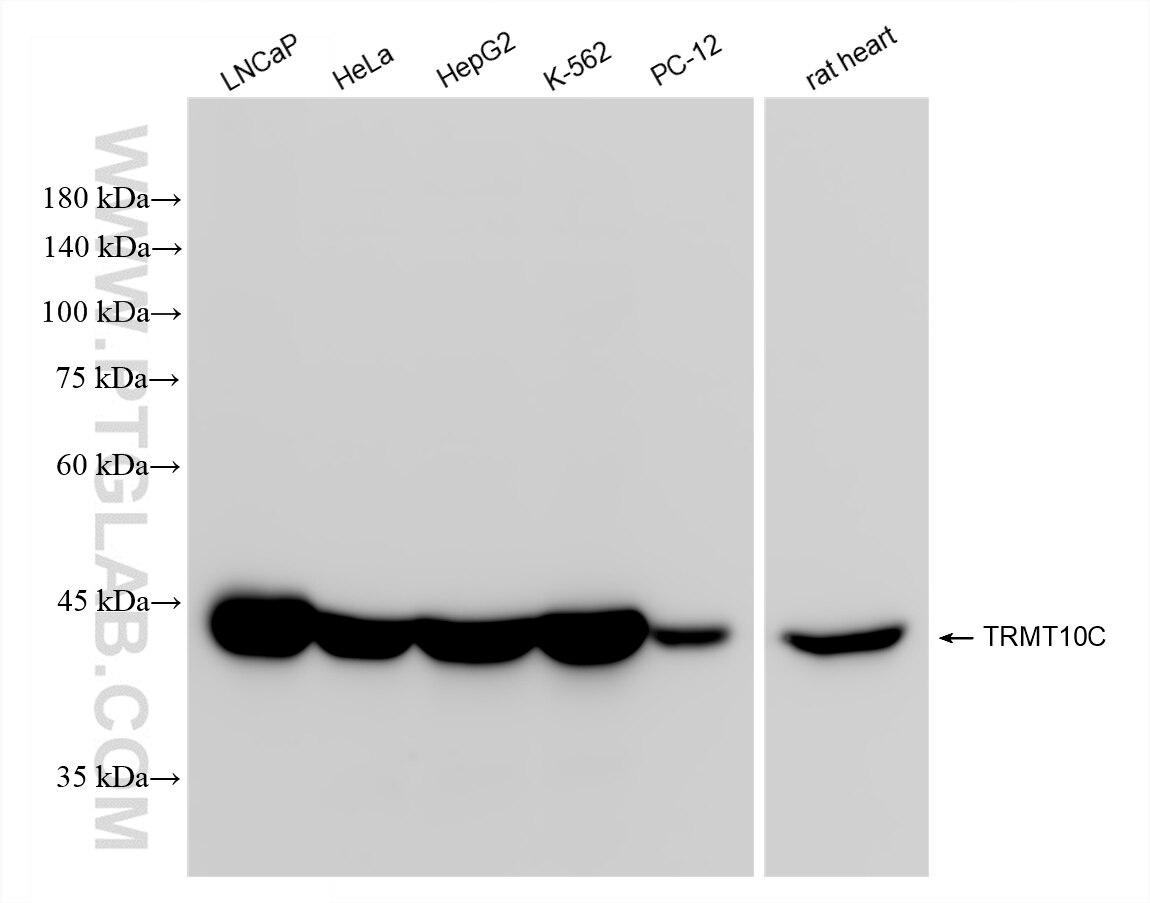TRMT10C Rekombinanter Antikörper
TRMT10C Rekombinant Antikörper für WB, ELISA
Wirt / Isotyp
Kaninchen / IgG
Getestete Reaktivität
human, Ratte
Anwendung
WB, ELISA
Konjugation
Unkonjugiert
CloneNo.
242522B5
Kat-Nr. : 84991-4-RR
Synonyme
Geprüfte Anwendungen
| Erfolgreiche Detektion in WB | LNCaP-Zellen, HeLa-Zellen, HepG2-Zellen, K-562-Zellen, PC-12-Zellen, Rattenherzgewebe |
Empfohlene Verdünnung
| Anwendung | Verdünnung |
|---|---|
| Western Blot (WB) | WB : 1:5000-1:50000 |
| It is recommended that this reagent should be titrated in each testing system to obtain optimal results. | |
| Sample-dependent, check data in validation data gallery | |
Produktinformation
84991-4-RR bindet in WB, ELISA TRMT10C und zeigt Reaktivität mit human, Ratten
| Getestete Reaktivität | human, Ratte |
| Wirt / Isotyp | Kaninchen / IgG |
| Klonalität | Rekombinant |
| Typ | Antikörper |
| Immunogen | TRMT10C fusion protein Ag30642 |
| Vollständiger Name | RNA (guanine-9-) methyltransferase domain containing 1 |
| Berechnetes Molekulargewicht | 47 kDa |
| Beobachtetes Molekulargewicht | 45 kDa |
| GenBank-Zugangsnummer | NM_017819 |
| Gene symbol | TRMT10C |
| Gene ID (NCBI) | 54931 |
| Konjugation | Unkonjugiert |
| Form | Liquid |
| Reinigungsmethode | Protein-A-Reinigung |
| Lagerungspuffer | PBS with 0.02% sodium azide and 50% glycerol |
| Lagerungsbedingungen | Bei -20°C lagern. Nach dem Versand ein Jahr lang stabil Aliquotieren ist bei -20oC Lagerung nicht notwendig. 20ul Größen enthalten 0,1% BSA. |
Hintergrundinformationen
tRNA methyltransferase 10 homolog C (TRMT10C, also known as MRPP1) is involved in mitochondrial RNA processing and modification (PMID: 21593607). It is essential for the 5'-ends processing of mitochondrial tRNAs and plays a critical role in mitochondrial respiration and translation (PMID: 18984158; 29040705). Mutations in TRMT10C may be a cause of mitochondrial disease and highlight the importance of RNA processing for correct mitochondrial function (PMID: 27132592).
Protokolle
| PRODUKTSPEZIFISCHE PROTOKOLLE | |
|---|---|
| WB protocol for TRMT10C antibody 84991-4-RR | Protokoll herunterladen |
| STANDARD-PROTOKOLLE | |
|---|---|
| Klicken Sie hier, um unsere Standardprotokolle anzuzeigen |


